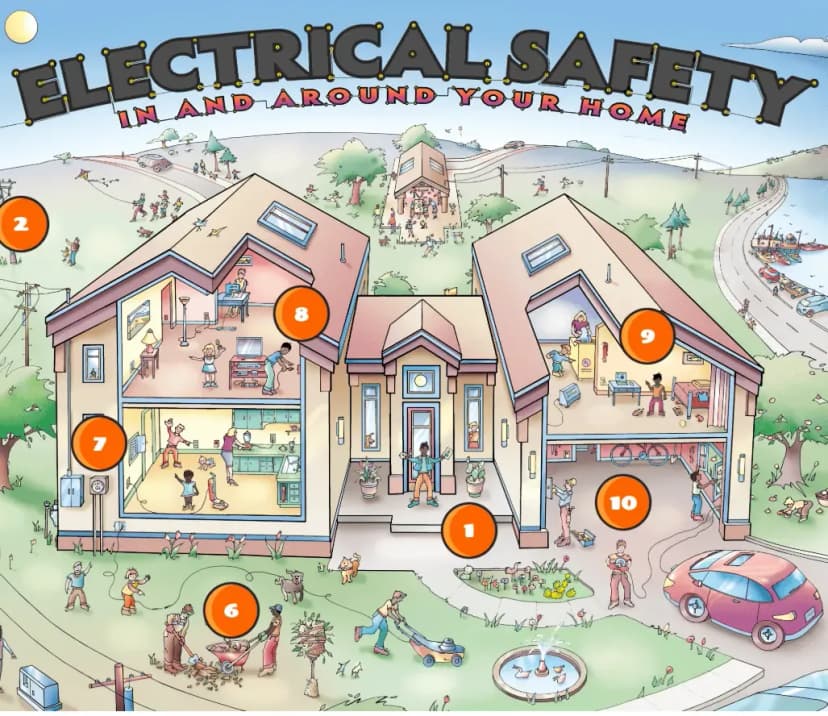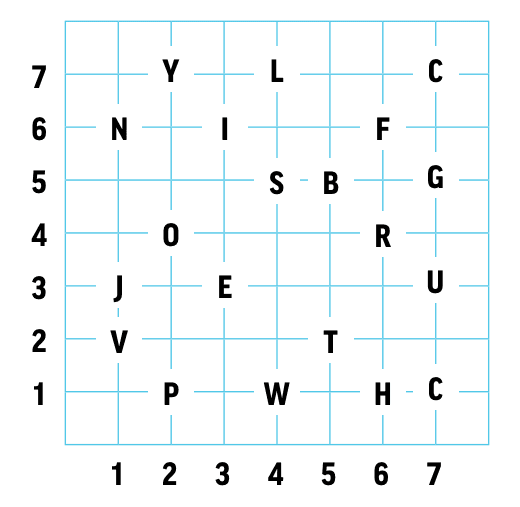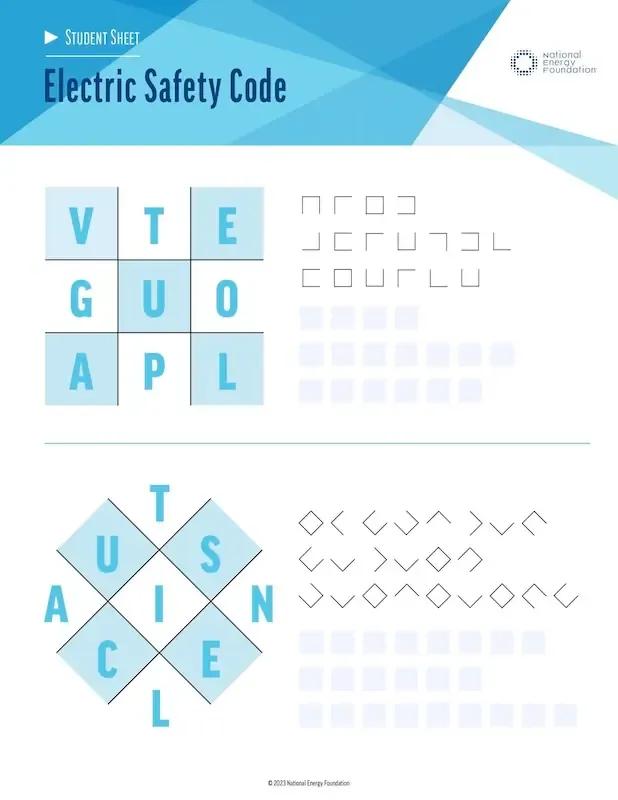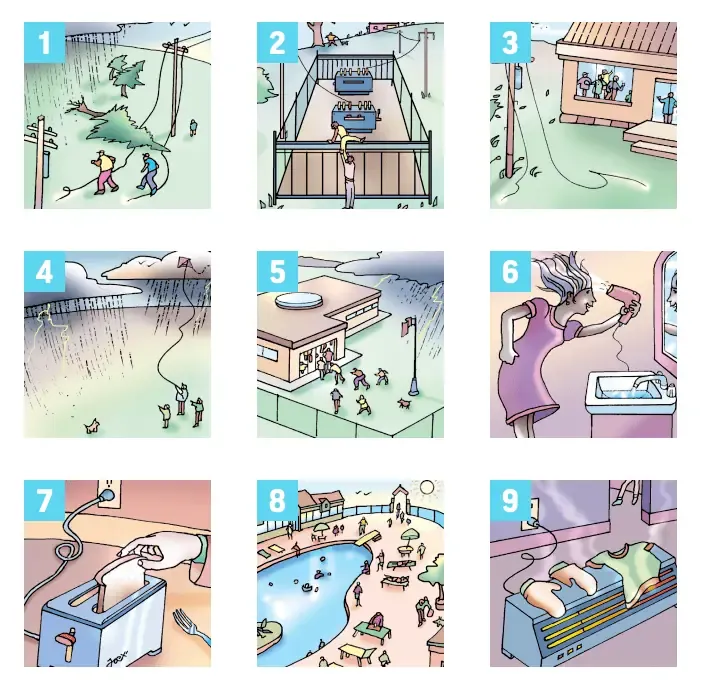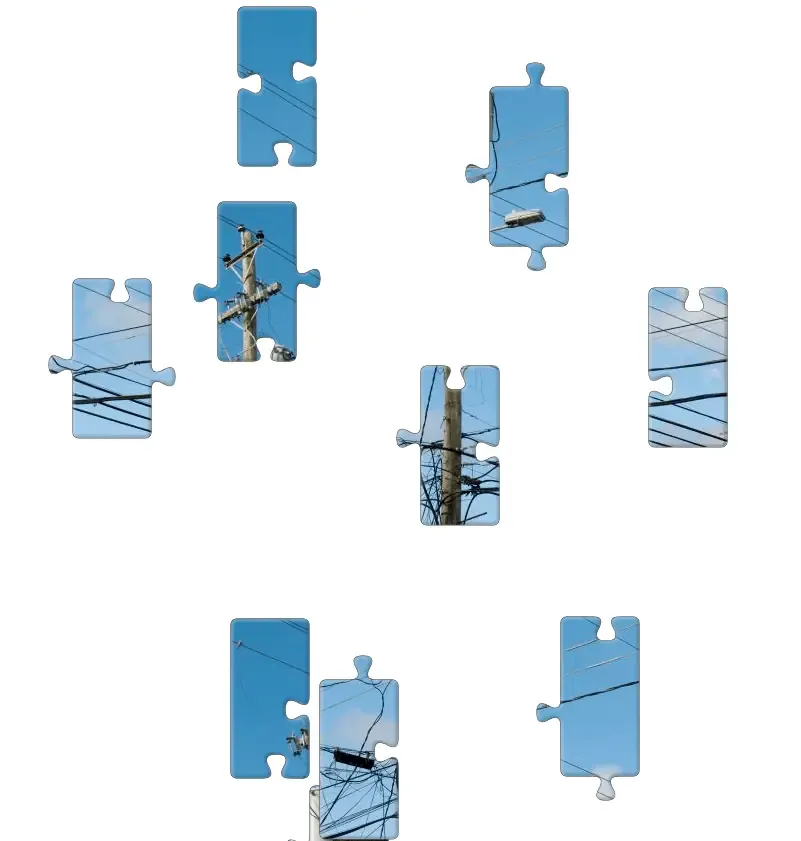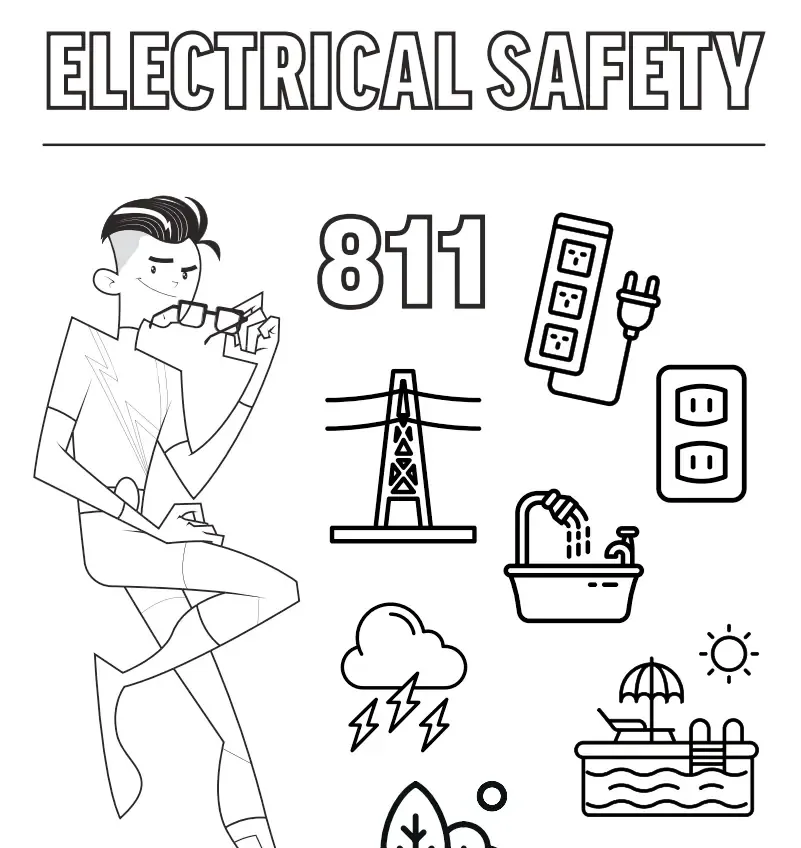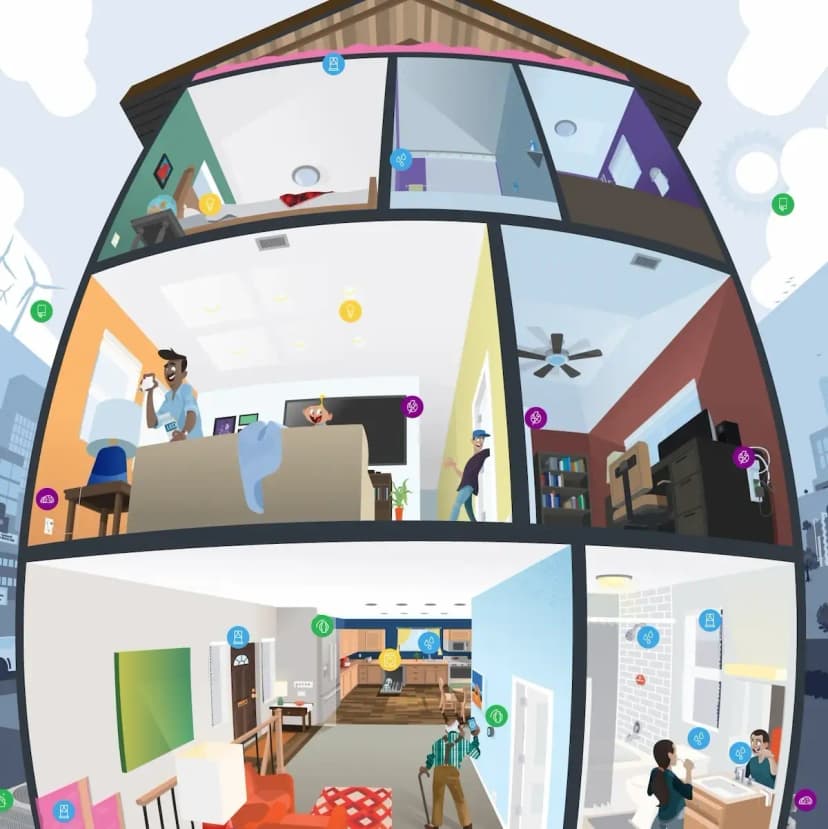Student Resources
Energy Resources for Students
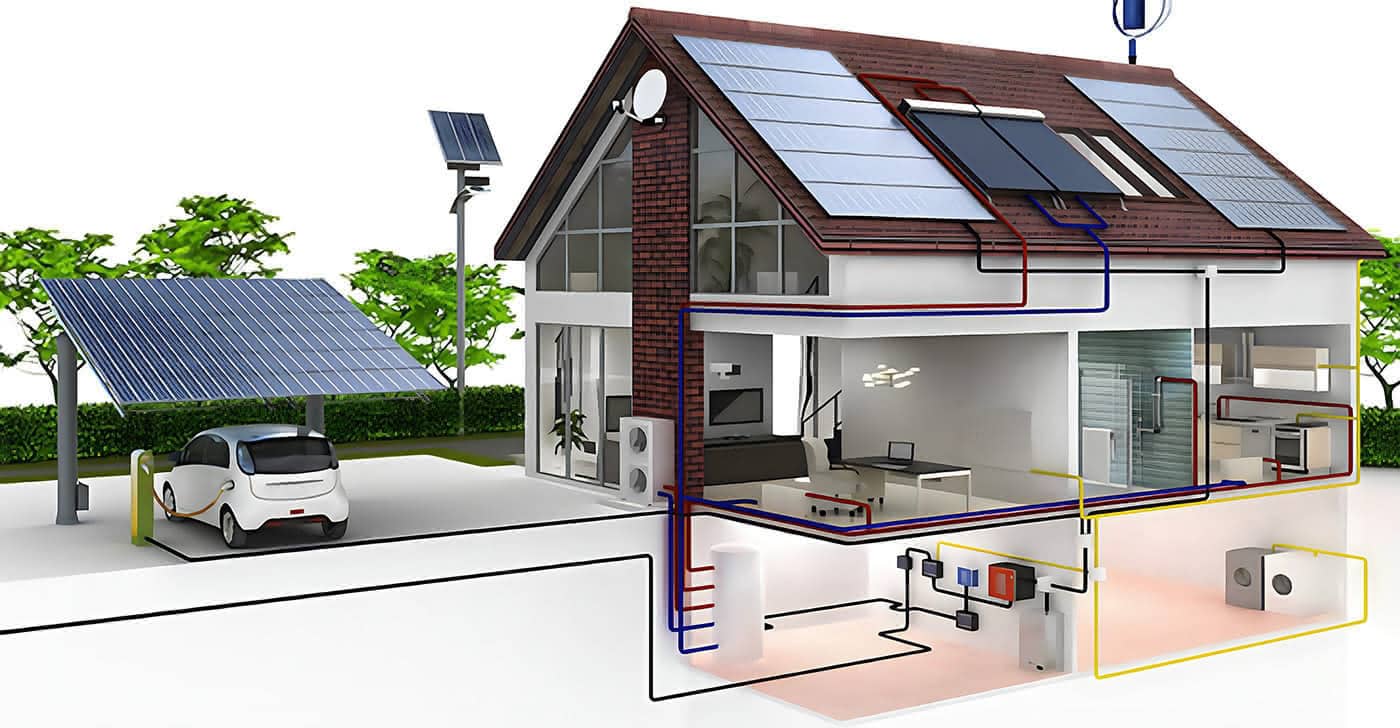
All About Electricity
Electricity is the flow of the moving electric charge of electrons. Electrons are parts of an atom that continuously orbit around the outside of the nucleus (the heart of the atom) and have a negative charge.
When this negative charge flows in a complete path, called a circuit, the continuously moving electric charge is called a current or electricity. This happens when there is a push to make electrons move, like people standing in line eager to get on a roller coaster ride. This transformation of energy changes electricity into a form that is useful to us.
Static Electricity
 Negative charges build up in the Earth’s atmosphere when there is a storm. The release of energy, as light and sound, is lightning. Those negative charges find a pathway to the ground or another object, like when people are released from a gate to find their seat on a roller coaster.
Negative charges build up in the Earth’s atmosphere when there is a storm. The release of energy, as light and sound, is lightning. Those negative charges find a pathway to the ground or another object, like when people are released from a gate to find their seat on a roller coaster.Potential Energy
Potential energy is energy waiting to be released, like a charge building up in the atmosphere before it produces lightning.
Kinetic Energy
 Electricity is kinetic energy because electrons bump into each other as their negative charges flow to a circuit or an electric device.
Electricity is kinetic energy because electrons bump into each other as their negative charges flow to a circuit or an electric device.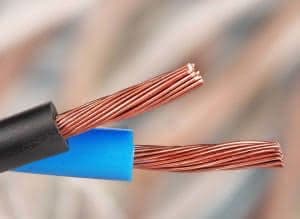
 Electricity flows through materials called conductors. Most metals are conductors of electricity, which is why wires are made of metals like copper and steel. Another conductor that many people do not think about is water.
Electricity flows through materials called conductors. Most metals are conductors of electricity, which is why wires are made of metals like copper and steel. Another conductor that many people do not think about is water.Think of a time when you were swimming outside and were told to get out of the water. Was a thunderstorm approaching? If so that is because there could be lightning and lightning is static electricity. It could strike the water and the electricity would flow through your body. This also means you are a good conductor of electricity!
Materials that do not conduct electricity well are called insulators. Some examples of insulators are wood, glass, plastic and rubber. The rubber or plastic coating on the wire protects us from the flow of electricity through our bodies.
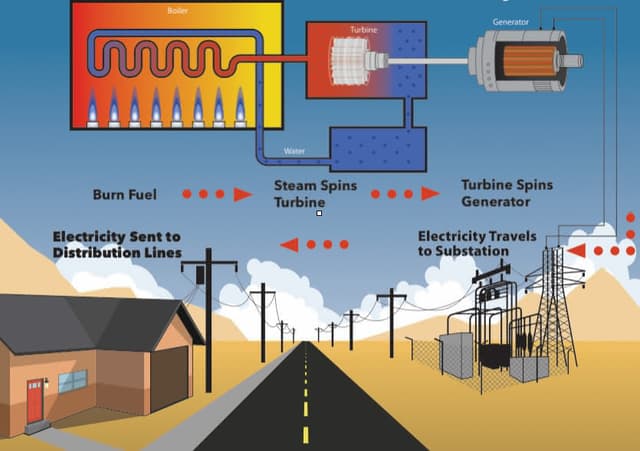
 Electricity is a secondary energy source, which means it is generated from a primary source (usually a natural resource such as sun, oil, coal, natural gas, nuclear, water or wind). Most electricity in the United States comes from steam powered generating plants that burn fossil fuels (coal, oil or natural gas) or use nuclear energy to heat water, thereby producing steam.
Electricity is a secondary energy source, which means it is generated from a primary source (usually a natural resource such as sun, oil, coal, natural gas, nuclear, water or wind). Most electricity in the United States comes from steam powered generating plants that burn fossil fuels (coal, oil or natural gas) or use nuclear energy to heat water, thereby producing steam.The steam spins a turbine, which is connected to a generator. The generator uses large magnets and coils of copper wire to create an electric current that is sent through the power lines, which can be above or below the ground.
Renewable resources can generate electricity as well. Hydropower, wind, solar, geothermal and biomass are sources that are used to generate electricity.
How is Electricity Used?
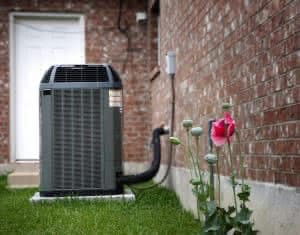
 We use electricity in many ways every day. There are four energy sectors in society: residential, commercial, industrial and transportation.
We use electricity in many ways every day. There are four energy sectors in society: residential, commercial, industrial and transportation.The largest use of electricity in U.S. homes (residential sector) is for air-conditioning and space heating, followed by water heating, lighting, refrigeration, TVs and related electronic equipment, powering computers and washing and drying clothes.
(Source: eia.gov/energyexplained, accessed November 2024)
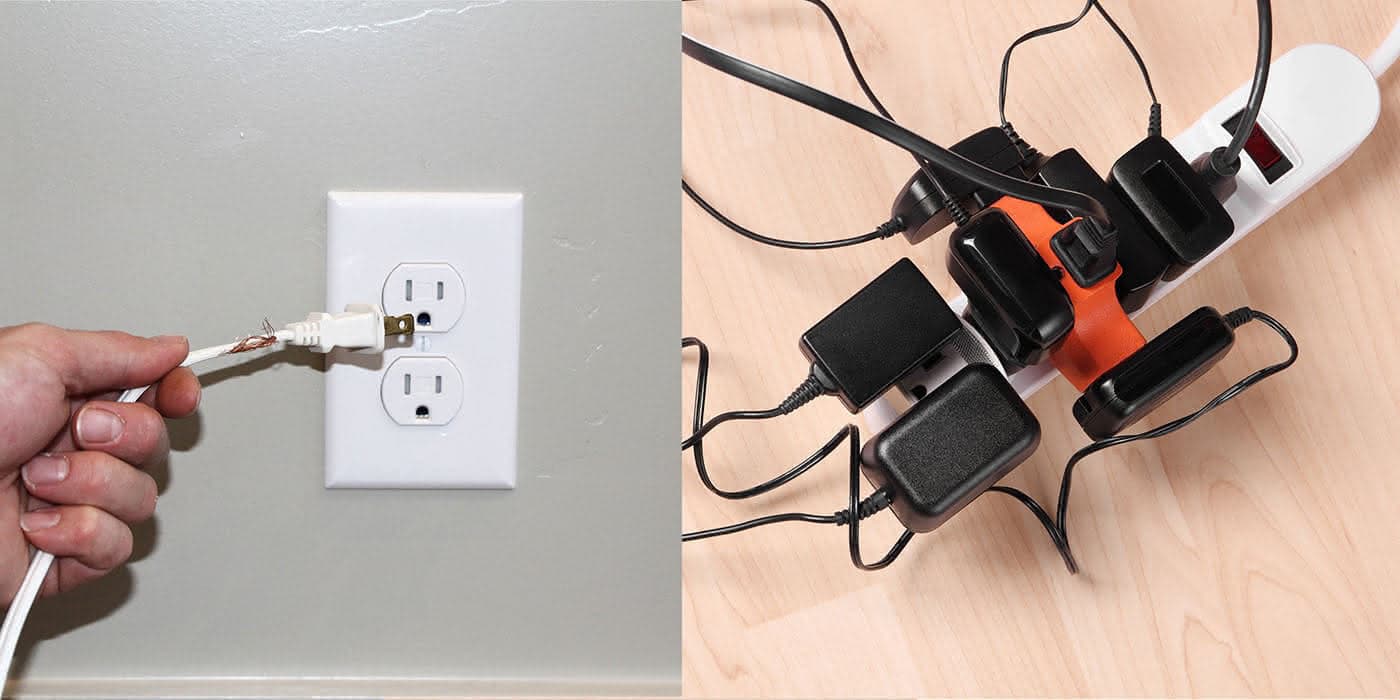
Be Safe Around Electricity
How safe is electricity?

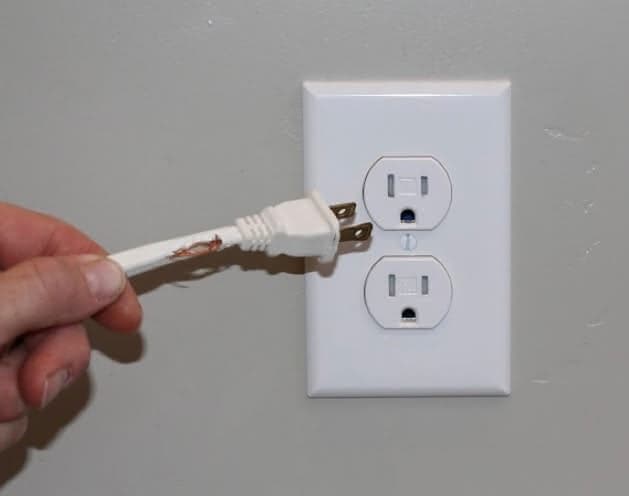
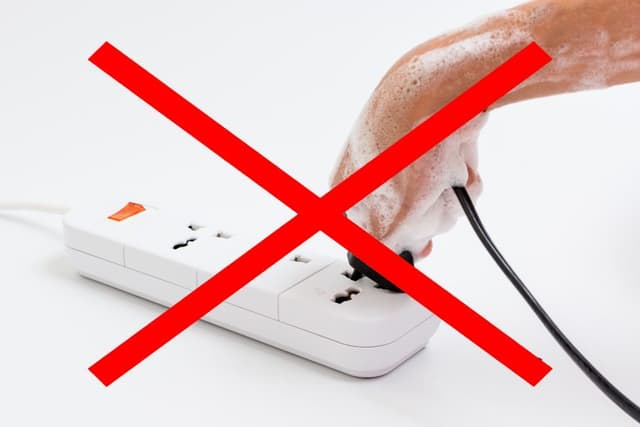
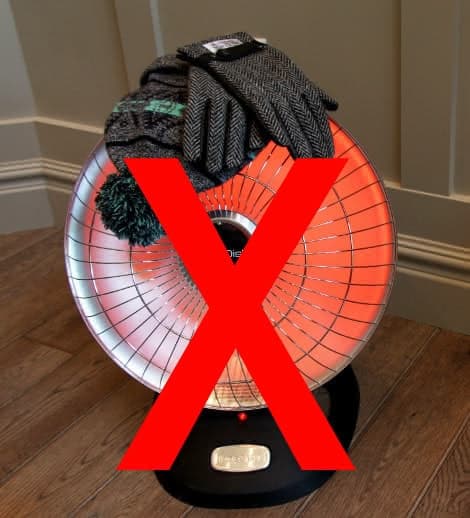
 Electricity, when used properly, is a safe and convenient form of energy. When used improperly, electricity can cause fires, shocks, injuries and even death. Follow these safety tips to help you avoid electrical accidents.
Electricity, when used properly, is a safe and convenient form of energy. When used improperly, electricity can cause fires, shocks, injuries and even death. Follow these safety tips to help you avoid electrical accidents.Using electricity safely at home:
Be careful with electrical cords.
- Avoid placing cords where people will trip over them or where they will receive excessive wear.
- Keep cords away from heat and water and do not twist, kink or crush cords.
- Always unplug an appliance by pulling the plug, not the cord. A frayed cord can shock you.
- Extension cords or outlets should not be overloaded. If an outlet or a power strip has too many things plugged into it, the outlet can become overloaded which creates a hazard in your home.
- Disconnect appliances before cleaning.
- Stay clear from touching metal plumbing, metal objects or appliances during a thunderstorm.
- Do not put anything on a lamp or heater, especially wet clothes.
- Keep anything metal away from an electrical socket or inside a toaster.
- Never use an appliance while standing in water or when wet.
- Turn off the switch or unplug the appliance before changing light bulbs.
- In case of an electrical fire, call the fire department and unplug the appliance if it is safe to do so. Always use a fire extinguisher or baking soda to put out an electrical fire, never use water.
Play It Safe Around Electricity
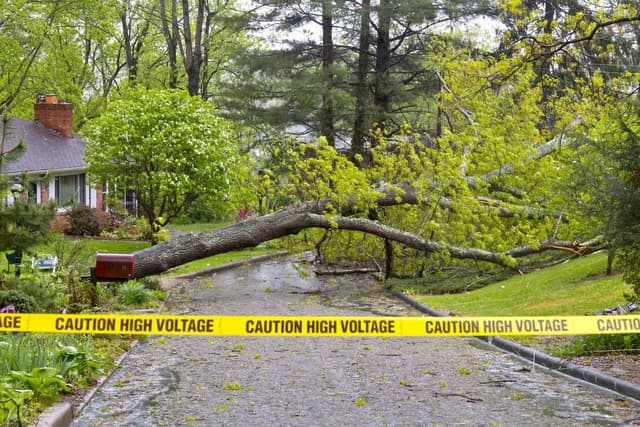
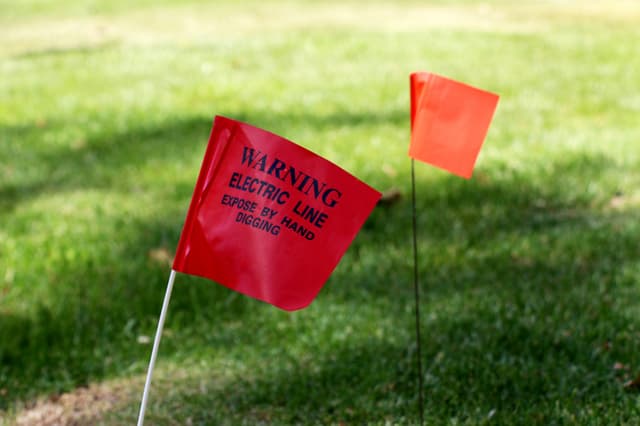
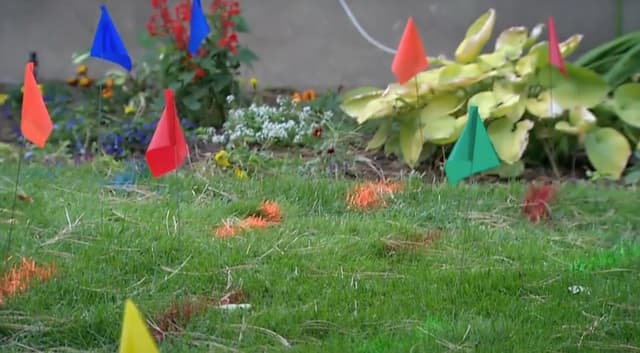

 Downed power lines and unsafe use of electricity can cause serious injury. Make sure your family is safe and review basic electric safety rules each year. Respecting electricity is the best way to prevent injuries and fires.
Downed power lines and unsafe use of electricity can cause serious injury. Make sure your family is safe and review basic electric safety rules each year. Respecting electricity is the best way to prevent injuries and fires.Stay at least 100 feet away from broken or fallen power lines.
Report downed power lines to an adult and call 911 and the electric company immediately. They will tell you when it is safe to play outside again.
Stay away from high-voltage areas. Power poles, high-voltage towers, transformers and substations are dangerous. Do not touch the electric meter outside your home.
Digging Safely
Digging causes most electrical safety concerns.
If you dig before finding out where underground cables and pipelines are located, you risk hitting and damaging them.
When you call 811 before you dig, you and your family stay safe.
Marker Flags
Every state has a system of marking property with colored flags or paint to show the location of underground cables or pipelines.
These flags are color-coded for the type of pipelines they mark.
Electric lines are marked with red flags.
All marker flags have an important job, such as marking the underground cables and pipelines that bring us natural gas, water, cable TV, etc.
We should never move them, take them out or dig near them.
Call 811 before you dig!
What to Do About a Downed Power Line
 Always stay away from downed power lines.
Always stay away from downed power lines.Call the utility company as soon as possible to have them fixed.
Your utility representative will let you know when it is safe again.
Avoid power lines:
- Look up when playing outside.
- Do not climb trees that have power lines running through them.
- Keep ladders away from power lines.
- Never fly kites near power lines and do not attempt to remove a kite tangled in a power line.
Stay Clear, Not Near

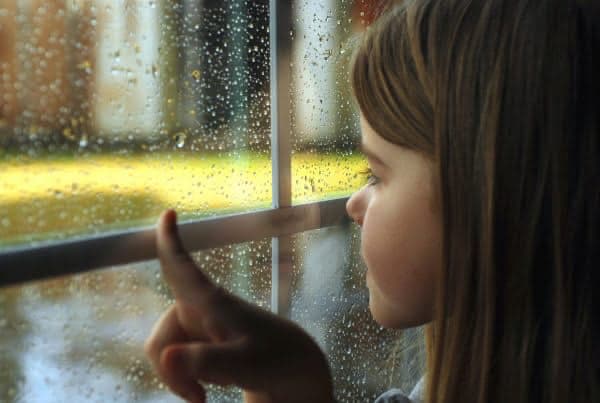
 If you can hear it, stay clear of it. If you can see it, flee it. Stay inside during thunderstorms or go indoors as quickly as possible. There is no safe place outside except for a permanent structure or inside a metal vehicle with all its windows closed.
If you can hear it, stay clear of it. If you can see it, flee it. Stay inside during thunderstorms or go indoors as quickly as possible. There is no safe place outside except for a permanent structure or inside a metal vehicle with all its windows closed.Lightning is nature's electricity in thunderstorms. It moves between clouds and from clouds to the ground. Lightning seeks the highest object or the best conductor to complete its circuit.
Did you know that it takes about 10,000 volts to create a one inch spark of lightning? Lightning contains millions of volts and easily can jump 10 to 20 feet!
When you see lightning, AVOID water, trees, open fields and partially enclosed shelters such as gazebos.
- Do not fly kites or drones in thunderstorms.
- Remember to STAY AWAY from water during thunderstorms.
- It is unsafe to be anywhere near a swimming pool during a thunderstorm, especially in it!
Downed Power Lines on a Car, Fence or Road
If you’re in a vehicle, stay put and warn others to stay at least 100 feet or about 6-7 car lengths from the power line. Then call 911.
If you see fire or smoke, get out of the vehicle immediately.
If you are inside a vehicle and must get out, make sure you do not touch the ground and the vehicle at the same time.
Jump from your vehicle and land with both feet together.
Don’t step in water and do not step on the power line.
Slowly shuffle away from the vehicle and power line.
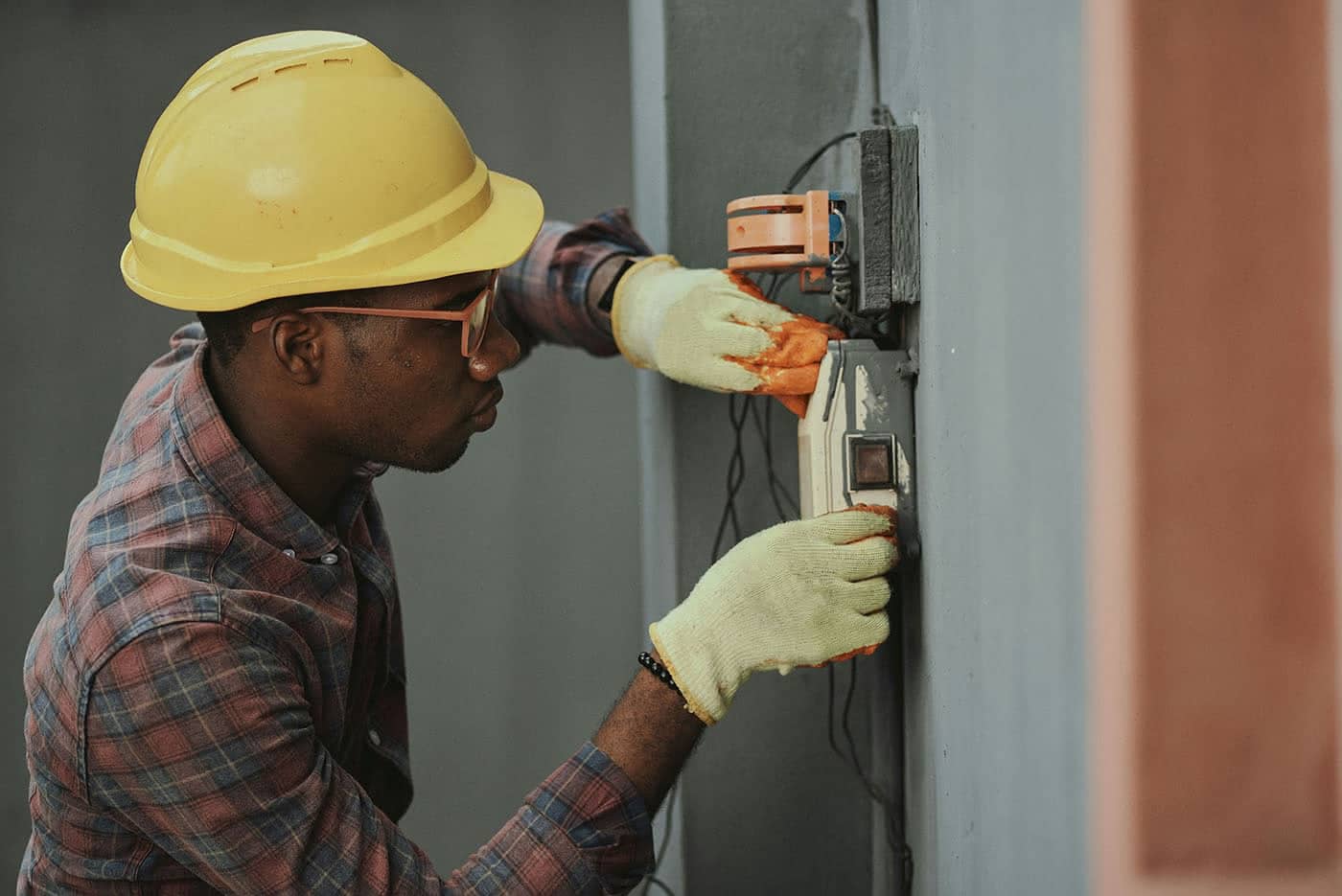
Your Energy Career
Careers in the energy industry are changing with technology all the time. Whether you’re excited about Science, Technology, Engineering or Math (STEM) or love to problem-solve and fix things with your hands, various careers are available. The energy industry relies on teamwork and hires workers who bring different skills and experiences to the workplace. The people who work in this industry impact their community in meaningful ways.
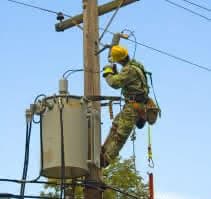
Line workers are responsible for transporting equipment to a job site and installing it. They repair cables, wires, transmission and distribution equipment that power buildings. Power lines, solar water heaters, photovoltaic panels, geothermal heat pump systems and many more systems need line workers. A high school diploma is necessary and a two year degree is optional. Salary range: $48,000 to $120,000

An engineer is a problem-solver who works with electricity grid diagrams, leading projects, collecting data, improving productivity and supporting environmental, health and safety activities. An engineering degree in electrical or mechanical engineering is required. Salary range: $49,000 to $130,000

An auditor completes estimations and inspections for energy equipment and the construction of buildings to make them energy efficient. They prepare reports summarizing energy analysis results and recommendations for energy cost savings. A high school diploma is necessary and a two year degree is optional. Salary range: $37,000 to $102,000

Operators manage the controls of power generation equipment that uses fossil fuels, nuclear or hydropower. A high school diploma is necessary and a two year degree is optional. Salary range: $44,000 to $93,000

A safety manager examines job sites, analyzes project materials and determines disposal methods. They comply with building codes and government regulations. A bachelor's degree and some years of experience (varies per company) are required. Salary range: $62,000 to $117,000

A solar technician assembles, installs or maintains solar photovoltaic (PV) systems on roofs or other structures in compliance with site assessment and schematics. May include measuring, cutting, assembling and bolting structural framing and solar modules. May perform minor electrical work such as current checks. A high school diploma or GED is necessary and while most companies prefer some experience, many will provide on-the-job training. Salary range: $44,000 - $62,000
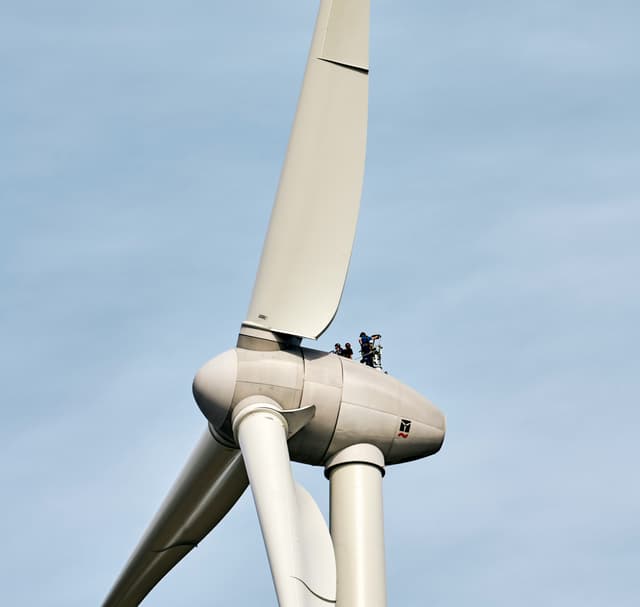
A wind technician assembles, installs or maintains wind turbines mostly in rural areas. A safety harness is worn to climb the towers when performing inspections. They conduct testing of the electrical, mechanical and hydraulic parts. They also maintain underground transmissions, such as fiber-optic cables. A high school diploma or GED is necessary and typically one to two years of on-the-job training. Salary range: $44,000 - $67,000
A meter technician installs and replaces meters as well as maintains them. Salary range: $41,000 to $47,000

Surveying and mapping technicians collect data and create maps of the earth's surface to support construction, mining, boundary location and other purposes. Salary range: $37,000 to $70,000

A dispatcher's job is to respond to calls, provide information and coordinate the activities of people working. They retrieve information from relevant departments to answer questions and provide assistance. Salary range: $34,000 to $99,000
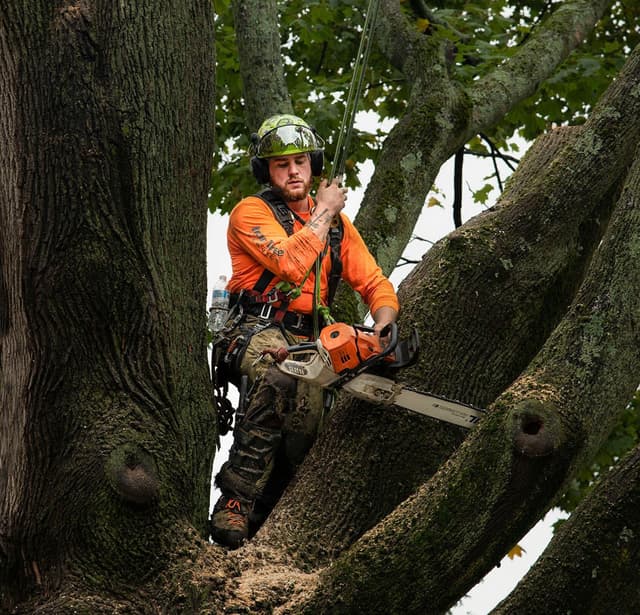
Arborists are tree care professionals who maintain the health and safety of trees and shrubs. They recommend removing damaged or diseased trees that pose a safety hazard. Salary range: $46,500 to $60,675

Student Take-home Booklets
Build your knowledge using the activity booklet. Click on the booklet and learn how to be an Energy Safe Kid.
Do the “Home Safety Checklist” with your family. Find out how you can improve safety in your home. Click on the link.
DEC Safety Booklet
Flag Chart Instructions

Videos
View fun videos to learn more about energy and for important safety messages.
Call 811 Before You Dig
Red's Five Steps for Safer Digging
Downed Power Lines

Games and Activities
Interactive poster games are fun, just click on numbers on the poster and answer questions to restore the letters. These poster games are in English and Spanish. Play “Safety Quest,” “Electric Safety Solve It,” “Electric Safety Code,” “Electric Safety Word Search,” “Electric Safety Crossword” and puzzles and more to learn about safety. Download coloring activities.

Online Household Safety Survey
After you have completed your lesson, please have your students use the online Household Safety Survey to help them learn about household safety.
